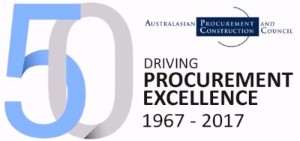The Australasian BIM Advisory Board (ABAB) held its third meeting for 2017 on 16 November in Melbourne where it continued to drive improved productivity and asset outcomes in the built environment through a consistent approach to the adoption of Building Information Modelling (BIM) across Australia and New Zealand.
The 24-strong members of the ABAB from government, industry and academia recognise the critical role the building and construction sector plays in the economies of Australia and New Zealand. As major clients in the building and construction industry, when adopting BIM governments have the potential to realise significant savings that can be harvested and re-directed to grow and expedite the pipeline of capital works. Looking to the UK where construction cost savings of 12-20 per cent have been achieved through the adoption of BIM and associated strategies, in Australia and New Zealand, this equates to an opportunity of building five schools or hospitals for the cost of four.
Two recent Australian Government reports (SmartICT and Australian Infrastructure Report) recommended an integrated approach between government, industry and researchers for the development of BIM in Australia. As seen overseas, a coordinated approach delivers benefits.
The Chair of ABAB, Michael Green is the Executive Director, Employment, Investment and Trade Policy, Victorian Department of Economic Development, Jobs, Transport and Resources. He stated that “the ABAB has made substantial progress in its first year of operation, focusing on three priority initiatives and delivering on the ABAB’s leadership and coordinating role in respect to the consistent adoption of BIM”.
Work is well underway to provide guidance for clients, their agents and lead consultants on formulating and defining their information requirements for building and infrastructure projects. A separate activity is producing an Intellectual Property (IP) educational piece by way of a framework and principles for IP to support all parties to a contract. The final body of work, expected to be released in the first quarter of 2018, is a BIM Process Consistency Handbook designed to share best practice in BIM processes and drive consistency across Australasian and New Zealand.
At the recent meeting of the ABAB, the government representatives detailed the direction of their government in respect to BIM strategic frameworks. “Understanding governments’ intentions underpins the work of the ABAB to drive a consistent approach” said Mr Green. Moving into 2018, this discussion supports the development of a set of principles for governments’ strategic adoption of BIM.
In the context of Smart Cities, BIM is the building block that can be used to realise the Smart Cities goals. The creation of a mature, digital economy (BIM) for the built environment will deliver high performing assets and exceptional value for all asset owners (public and private), taxpayers, and the community as well as a knowledge base to enable Smart Cities and create a Digital Built Australia and New Zealand. Governments and the construction industry can benefit from adopting a BIM strategy to improve exports, create more jobs, further stimulate the economy, realise savings to finance infrastructure assets, and help create a sustainable built environment.
The time has come for the Australasian construction sector to reform by seizing the opportunities offered by BIM, creating a positive multiplier effect for the economy. The sector employs 1.1 million Australians with a further 100,000 jobs projected to be added by the sector over the next five years. The building and construction sector employees more than five times that of the mining industry. (Source: Digital Foundations Report, StartupAUS).
BIM contributes to significant savings of time and money while increasing project quality and productivity. Productivity growth in the Australian construction industry has remained flat for the past 23 years compared to the manufacturing industry (Source: Digital Foundations – How technology is Transforming Australia’s Construction Sector).
Collaborate on BIM and receive regular updates
To share ongoing information and resources, the ABAB is establishing the website to provide information on best practice approaches, standards, tools, theories, and technologies, and assists to develop industry skills in BIM. The site also provides an opportunity for you to share your insights on BIM, or register to receive ongoing articles about the development of BIM protocols and guidelines from a wide range of stakeholders.
About the Australasian BIM Advisory Board
The BIM Advisory Board was established by the Australasian Procurement and Construction Council (APCC) and the Australian Construction Industry Forum (ACIF), together with the key standard-setting bodies NATSPEC, buildingSMART and Standards Australia. The Board has evolved from a previous APCC–ACIF collaboration established in 2015 on a BIM Summit. This Summit produced a number of resources, including a guide to the adoption of BIM (see www.apcc.gov.au and www.acif.com.au).
Media inquiries: Teresa Scott, Executive Director, APCC on 0402 137 315 or James Cameron, Executive Director, ACIF on 0488 277 529


0 Comments Leave a comment